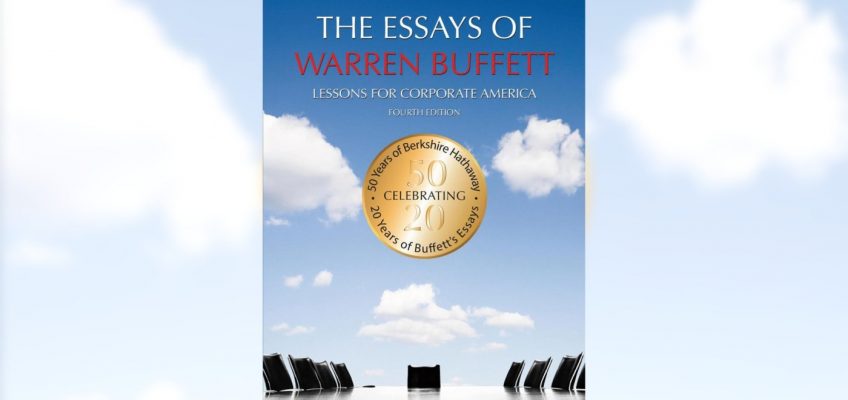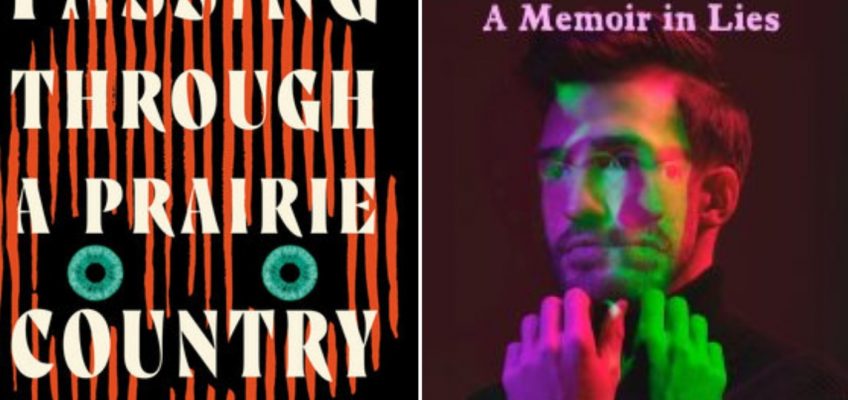By Brian Baker, CFA, Bankrate.com
The investment world can be difficult to navigate, especially if you’re just starting out. There are lots of confusing terms and complicated acronyms that can turn off someone who’s looking to learn more about financial concepts.
Fortunately, there is no shortage of investing books that can help you learn what you need to know to become a savvy investor. Books can be read at your own pace and are typically written by experts who have spent years in the industry researching investments.
Here are some of the best investment books for beginners to consider adding to their reading lists.
1. “The Only Investment Guide You’ll Ever Need” by Andrew Tobias
If you are truly just starting out in your investing journey, this book is a great place to start. You’ll learn tips on how to save and invest for your future and get excellent advice on what to avoid in the financial world. Tobias has a great sense of humor, so the book is fun to read even if finance and investing aren’t your favorite subjects.
“The Only Investment Guide You’ll Ever Need” was first published in the 1970s, but was recently updated and has stood the test of time. It’s a great first step on your journey to being a knowledgeable investor.
2. “The Little Book of Common Sense Investing: The Only Way to Guarantee Your Fair Share of Stock Market Returns” by John Bogle
Vanguard Group founder John Bogle, who died in 2019, spent his career advocating for and providing products and services that benefited everyday investors. Legendary investor Warren Buffett wrote in 2017 that if a statue were ever built to honor the person who had done the most for U.S. investors, the choice should be Bogle.
Bogle was a massive proponent of investing in index funds and keeping costs to a minimum, allowing more of the market’s returns to end up in shareholders’ pockets instead of fund managers’. His book shows you why it’s so important to keep costs low when you’re investing and touches on taxes, mean reversion, bonds and exchange-traded funds (ETFs).
3. “Richer, Wiser, Happier: How the World’s Greatest Investors Win in Markets and Life” by William Green
In it, Green profiles several legendary investors, including Mohnish Pabrai, Howard Marks, Charlie Munger and Nick Sleep, and shows readers what lessons can be learned from each of them. (Handout/Scribner/TNS)
Written in 2021, this book by William Green has quickly earned a reputation as one of the best books on investing. In it, Green profiles several legendary investors, including Mohnish Pabrai, Howard Marks, Charlie Munger and Nick Sleep, and shows readers what lessons can be learned from each of them.
Many of the investors profiled share common traits such as independence, resilience, simplicity and clarity of thought. Reading about the journeys of these great investors and the different paths they took to achieving great wealth is inspiring and filled with lessons about how to succeed in investing and life.
4. “The Essays of Warren Buffett: Lessons for Corporate America” by Warren Buffett and Lawrence Cunningham
Warren Buffett is one of the clearest thinkers on the subject of investing the world has ever seen and he’s been gracious enough to write many of his thoughts down in the form of his letters to Berkshire Hathaway shareholders. Lawrence Cunningham, a former professor at George Washington University’s Law School, organized the letters by subject matter, such as corporate governance, mergers and acquisitions, valuation and accounting.
Despite their complex topics, the book isn’t difficult to read. Buffett has said that he writes the letters thinking of his sisters, who were smart and interested in business, but not as well-versed as he is in the matter. Readers will come away with a valuable education in business and investing.
If you’re a fan of Berkshire, you might also enjoy “Buffett & Munger Unscripted.” This book, arranged by Alex Morris and published in 2025, uses the same concept as Cunningham’s book, but the material comes from comments Buffett and his late partner Charlie Munger made at 30 years worth of Berkshire annual meetings.
5. “The Little Book That Beats The Market” by Joel Greenblatt
As a hedge fund manager in the 1980s and ’90s, Joel Greenblatt generated annualized returns of about 50 percent. Since then, he has spent some of his time teaching and writing books, hoping to help others generate better investment returns.
In “The Little Book That Beats The Market,” Greenblatt lays out his magic formula for identifying great businesses that are undervalued. The book uses simple math and is written so that anyone can understand the concepts being discussed. Whether you adopt the formula yourself or not, the book is one of the best at showing how and why a simple strategy can generate outstanding returns over time.
6. “One Up On Wall Street” by Peter Lynch
Peter Lynch was a household name in the 1980s, managing Fidelity’s famed Magellan Fund. During the 13 years Lynch managed the fund, its assets grew to $14 billion from $18 million and outperformed the S&P 500 by a wide margin.
Related Articles
Working Strategies: Using AI tools to prepare for interviews
WCCO-AM cancels, reinstates ‘The Lake Show with Henry Lake’
Downtown St. Paul Lunds & Byerlys closes permanently on March 26
5 ways to know if unretirement is right for you
Trump administration throws hundreds of affordable housing projects into limbo after contract cuts
“One Up On Wall Street” lays out Lynch’s investing philosophy and how regular people can outperform professional investors by sticking to what they know and keeping their eyes peeled for stock ideas. He convinces readers that they can find the next great stock by paying attention when they’re at the grocery store or the mall (or perhaps shopping online today). Lynch’s tips may help you identify a “10-bagger,” or a stock that returns 10 times its purchase price.
7. “The Psychology of Money: Timeless Lessons on Wealth, Greed and Happiness” by Morgan Housel
Though not solely focused on investing, “The Psychology of Money” is an excellent and practical book that focuses on the many ways that consumers make decisions about money. Oftentimes, economists and financial experts assume that people are perfectly rational when they make decisions about their finances, but we know that could not be further from the truth.
Housel uses 19 short stories to illustrate how people behave when making money decisions and shows you how to think more clearly about your financial journey. By understanding the many traps that can prevent you from reaching your financial goals, you’ll hopefully avoid them and learn how to make wiser decisions throughout your financial life.
Housel’s most recent book is “Same as Ever: A Guide to What Never Changes” and is also filled with insights that are applicable to investing. Investors are often focused on what they think is going to change and how they can position themselves for that change, but understanding what will stay the same is often the better approach.
8. “The Most Important Thing: Uncommon Sense for the Thoughtful Investor” by Howard Marks
Howard Marks is the co-chairman of Oaktree Capital Management and his quarterly letters have long been widely read in the investment community. This book draws on those letters to identify key ways that great investors think in order to produce outstanding returns.
Marks focuses on topics such as risk, identifying bargains, cycles and appreciating the role of luck in investment outcomes. The book is likely to stand the test of time and it may be one that investors find themselves coming back to often.
9. “The Book on Rental Property Investing: How to Create Wealth With Intelligent Buy and Hold Real Estate Investing” by Brandon Turner
Most people think of the stock market when it comes to investing their money, but it’s not the only game in town. Real estate investing can also build wealth and its physical nature can sometimes be easier to comprehend for people than the stock market, which can feel abstract.
In this book, Brandon Turner lays out how to make money through rental properties, taking you through the whole process of buying your first unit to collecting those rent payments. If you’ve ever wondered how to make money through real estate, this book is a great place to start.
10. “The Simple Path to Wealth: Your Road Map to Financial Independence and a Rich, Free Life” by JL Collins
If you’re tired of complicated and confusing explanations of financial issues from so-called experts, this book is for you. This book, which grew out of a series of letters to Collins’ daughter, tackles most of life’s financial issues in a simple, easy-to-understand way. New and experienced readers alike will benefit from the book’s clarity on issues such as debt, the stock market and how to build wealth.
Collins highlights the importance of understanding your financial life so that you aren’t taken advantage of by the “charlatans of the financial world.” Reading this book will likely save you money and make it more likely that you’ll achieve your financial goals.
11. “Clever Girl Finance: Learn How Investing Works, Grow Your Money” by Bola Sukunbi
Women are one of the groups most underserved by the financial industry, and this book seeks to address that issue by being straightforward and understandable. It doesn’t try to impress readers with complex topics, instead it sticks to what you need to know to start investing.
You’ll learn how the stock market works as well as key concepts like inflation, compound interest and the rule of 72. Once you’ve got the basics down, the book focuses on how to research investments and where to make purchases once you’re ready. It’s a great choice for recent graduates and those early in their careers.
12. “The Outsiders: Eight Unconventional CEOs and Their Radically Rational Blueprint for Success” by William N. Thorndike Jr.
Many investors think they need to identify companies with game-changing innovation or hyperbolic growth in order to be successful as an investor, but this book shows how solid businesses run by rational CEOs led to outstanding long-term returns for their companies’ shareholders.
Thorndike profiles eight CEOs and companies whose stocks massively outperformed the S&P 500 during their tenures by focusing on things such as share repurchases, careful acquisitions and growing shareholder value.
Bottom line
Knowledge is power, especially when it comes to investing. If you’re looking to grow your financial know-how, or just pick up tips from some of the top thought leaders in the industry, you can’t go wrong with one of the picks on this list.
©2025 Bankrate.com. Distributed by Tribune Content Agency, LLC.


